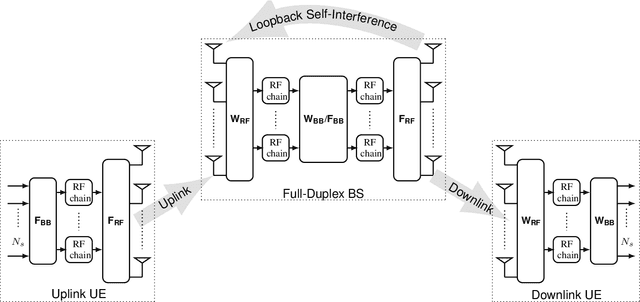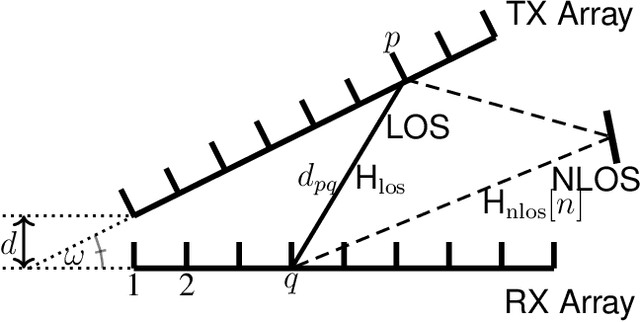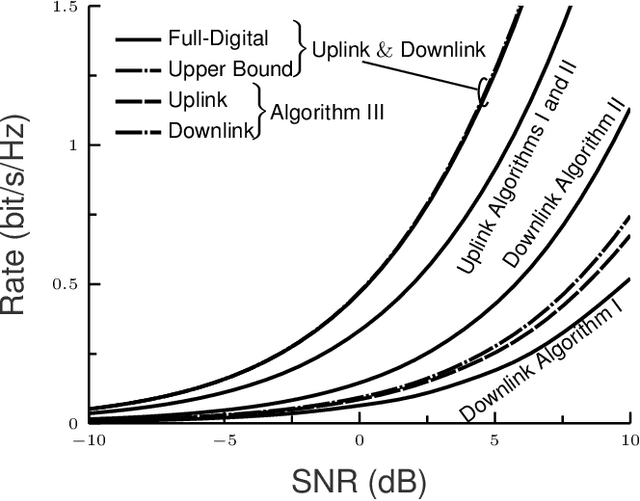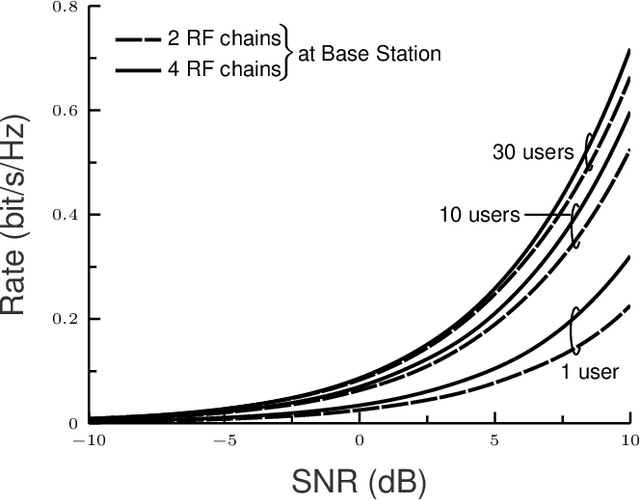Joint Beamforming and Interference Cancellation in MmWave Wideband Full-Duplex Systems
Paper and Code
Oct 23, 2021



Full-duplex (FD) systems have the capability to transmit and receive at the same time in the same frequency band. FD systems can reduce congestion and latency and improve coverage and spectral efficiency. As a relay, they can increase range and decrease outages. Full-duplex (FD) wireless systems have been emerging as a practical solution to provide high bandwidth, low latency, and big data processing in millimeter wave and Terahertz systems to support cellular networks, autonomous driving, platooning, advanced driving assistance and other systems. However, FD systems suffer from loopback self-interference that can swamp the analog-to-digital converters (ADCs) resulting in very low spectral efficiency. In this context, we consider a cellular system wherein uplink and downlink users independently communicate with FD base station. The proposed contributions are (1) three hybrid beamforming algorithms to cancel self-interference and increase the received power, and (2) evaluation of outage probability, spectral efficiency, and energy efficiency of the proposed algorithms. We consider full-digital beamforming and upper bound as benchmarks. Finally, we show the resiliency of Algorithm 2 against self-interference in comparison with Algorithms 1 and 3, as well as conventional approaches such as beam steering, angle search and singular value decomposition.
 Add to Chrome
Add to Chrome Add to Firefox
Add to Firefox Add to Edge
Add to Edge